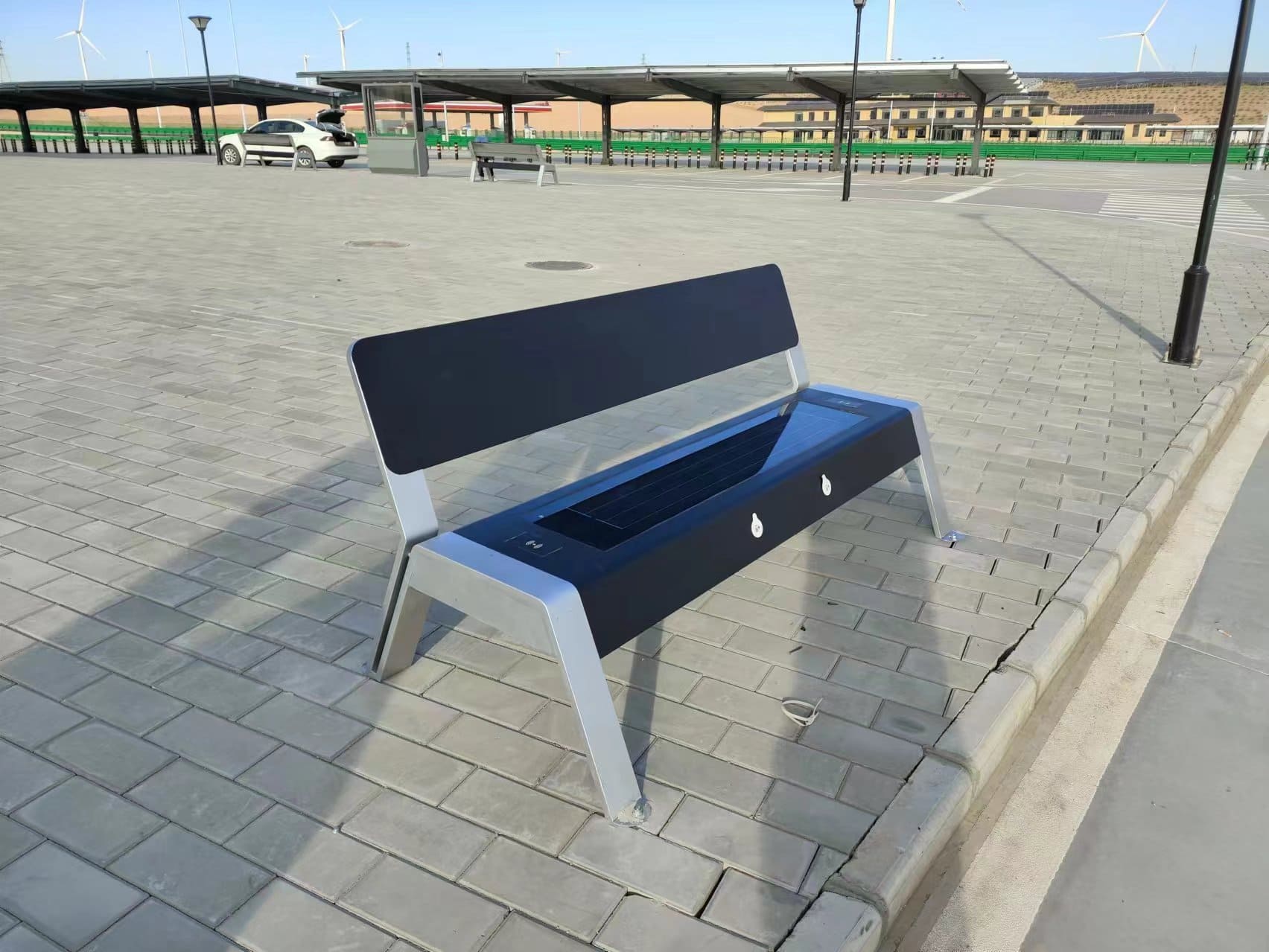Solar Smart Benches: Powering the Future of Urban Spaces
With growing global attention on sustainability and smart city development, a new type of public amenity is quietly transforming our urban landscapes: the solar smart bench. It's more than just a place to sit; it's a high-tech urban hub. So, how do these seemingly simple benches work, and what revolutionary changes do they bring to our cities and residents?
Beyond the Traditional: Core Functions and Technology
The core of a solar smart bench is its self-sufficient energy system. Using high-efficiency solar panels integrated into the bench's design, it converts sunlight into electricity, which is then stored in a high-performance battery. This system allows the bench to operate off-grid 24/7, even continuing to function for over 48 hours without direct sunlight.
Key Component Breakdown:
- Multi-functional Charging Ports: Equipped with USB ports and Qi wireless charging pads, allowing residents and tourists to charge their phones and tablets anytime.
- Free Wi-Fi Hotspot: An integrated 4G/5G router provides stable internet connectivity up to 150 Mbps, solving the issue of limited public Wi-Fi.
- Environmental Sensors: Real-time data on air quality, temperature, and humidity provides city managers with valuable IoT data to aid in decision-making.
- LED Night Lighting: Uses stored energy to automatically illuminate at night, enhancing public space safety and aesthetics.
- Advertising & Information Screens: Some premium models feature digital screens or light boxes for public service announcements or to generate advertising revenue, creating a new economic stream for the city.

Multiple Benefits: Profound Impact on Cities and Residents
The value of a solar smart bench extends far beyond its technology, bringing significant changes to urban planners and everyday residents.
Benefits for Cities:
- Enhances Public Space Quality: Modern, functional benches make parks, squares, and bus stops more appealing, showcasing a city's commitment to innovation.
- A Model of Sustainability: As a zero-emission public amenity, it visibly demonstrates a city's use of renewable energy, helping to achieve carbon-neutral goals.
- Data-Driven Urban Management: Data from sensors allows city managers to optimize resource allocation, like adjusting public transport routes or trash collection frequency, enabling smarter operations.
Benefits for Residents:
- Seamless Connectivity: On-the-go charging and internet access allow people to stay connected while enjoying outdoor activities, improving convenience.
- Increased Public Safety: Nighttime lighting effectively reduces crime rates, creating a safer evening environment.
- Fosters Community Interaction: Provides a modern space for people to relax, socialize, and connect, strengthening community bonds.
Market Insights and Success Stories
The solar smart bench market is experiencing rapid growth. According to a TechSci Research report, the global market size was already $3.36 billion in 2024 and is projected to reach $7.05 billion by 2030, with a Compound Annual Growth Rate (CAGR) of 12.99%. This indicates immense market potential and growing investment from cities and businesses.
Successful Deployments:
- Wrexham, UK: Smart benches were deployed in the town center as part of a regeneration plan to enhance visitor experience and promote environmental sustainability.
- Yarra City Council, Australia: Installed smart benches with sensors for air quality, temperature, and humidity, gathering environmental data for urban planning.
- Soofa Benches in the US & Globally: Deployed in over 65 cities, including Boston and New York, providing charging, Wi-Fi, and unique pedestrian traffic data collection features that help city managers optimize local business layouts.
Data Analysis: ROI and Benefit Assessment
While the initial investment for a solar smart bench is higher than a traditional one (typically between $2,800 and $5,500), its long-term economic and social benefits are clear.
| Dimension |
Traditional Bench |
Solar Smart Bench |
| Functionality |
Resting |
Resting, charging, Wi-Fi, lighting, data collection |
| Energy Use |
None (requires grid power for lighting) |
Self-powered by solar, zero operational electricity costs |
| Maintenance Cost |
Periodic cleaning/repairs |
Low maintenance, mainly cleaning solar panels |
| Social Benefit |
Basic public amenity |
Enhances city image, promotes community interaction, improves environment |
| Economic Benefit |
No direct revenue |
Potential for ad revenue, reduces municipal operational costs |
| Return on Investment (ROI) |
Lower |
Higher (based on long-term energy savings and added features) |

Chart: Global Solar Smart Bench Market Size Forecast (2024-2030)

Challenges and Solutions
Despite the promising outlook, promoting solar smart benches faces challenges such as high initial costs and potential vandalism. However, the industry is proactively addressing these issues:
- Highly Durable Materials: Using galvanized and high-strength steel with tempered glass panels effectively guards against extreme weather and vandalism.
- Public-Private Partnerships (PPP): Local governments are collaborating with companies to share initial investment costs by leveraging ad revenue and other means.
- IoT Remote Monitoring: Remote systems can monitor the bench's status in real-time, allowing for prompt detection and resolution of issues, ensuring continuous operation.
In conclusion, the solar smart bench is more than just a small technological upgrade for modern cities. It's a symbol of urban development moving towards a smarter, more sustainable, and more people-centric future. For city planners, choosing a smart bench isn't just about buying a product; it's an investment in a better, more connected future.


